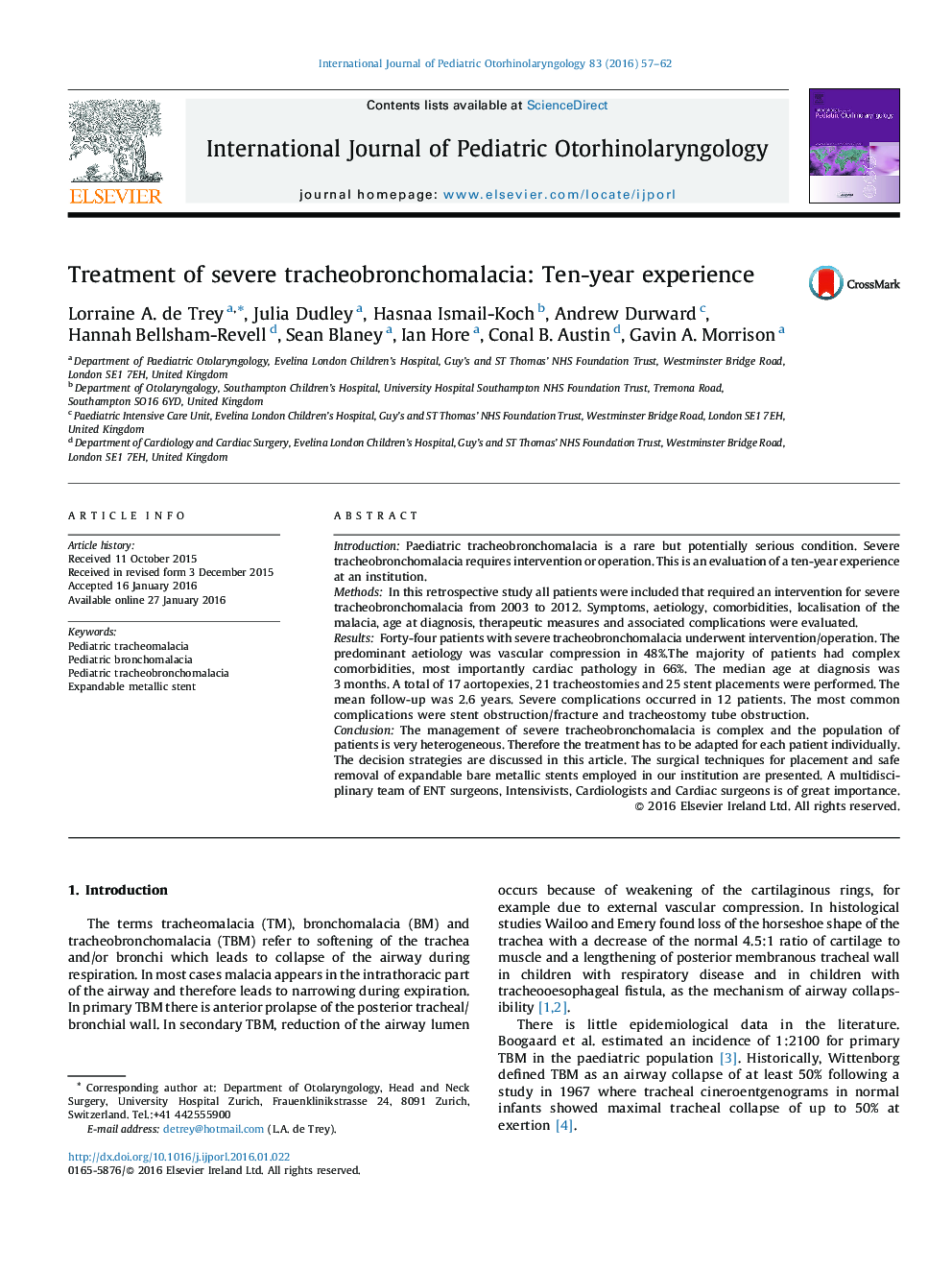| Article ID | Journal | Published Year | Pages | File Type |
|---|---|---|---|---|
| 6213272 | International Journal of Pediatric Otorhinolaryngology | 2016 | 6 Pages |
IntroductionPaediatric tracheobronchomalacia is a rare but potentially serious condition. Severe tracheobronchomalacia requires intervention or operation. This is an evaluation of a ten-year experience at an institution.MethodsIn this retrospective study all patients were included that required an intervention for severe tracheobronchomalacia from 2003 to 2012. Symptoms, aetiology, comorbidities, localisation of the malacia, age at diagnosis, therapeutic measures and associated complications were evaluated.ResultsForty-four patients with severe tracheobronchomalacia underwent intervention/operation. The predominant aetiology was vascular compression in 48%. The majority of patients had complex comorbidities, most importantly cardiac pathology in 66%. The median age at diagnosis was 3 months. A total of 17 aortopexies, 21 tracheostomies and 25 stent placements were performed. The mean follow-up was 2.6 years. Severe complications occurred in 12 patients. The most common complications were stent obstruction/fracture and tracheostomy tube obstruction.ConclusionThe management of severe tracheobronchomalacia is complex and the population of patients is very heterogeneous. Therefore the treatment has to be adapted for each patient individually. The decision strategies are discussed in this article. The surgical techniques for placement and safe removal of expandable bare metallic stents employed in our institution are presented. A multidisciplinary team of ENT surgeons, Intensivists, Cardiologists and Cardiac surgeons is of great importance.
